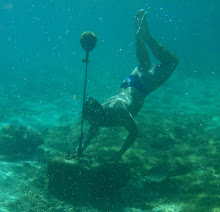
As soon as darkness fell, the possums and gliders were on the move, fantastic stuff! Once again we had a possums walking straight through our camp and a glider sitting in one of the campsite trees less than 10 meters from our tents.

It is a glider in the forth picture, diagnostic features are the skin fold up around the front legs and (apparently) the white tip of the tail. The excess skin is what allow these nocturnal creatures to avoid having to walk on the ground during night, but instead fly -or glide - between trees by transforming themselves into a flat, thin and lightweight wing.

One of the reasons for buying a longer macro lens i.e. 150mm was that it would double as a fast semi-long lens that could relieve the bigma under difficult lighting conditions, where light gathering properties become more important than reach; such as in a dark rain forest or while doing night spotlighting in the Kosciuszko!

A fast lens, like the f/2.8 macro, needs much less light to autofocus simply because it allows more light to flow through the lens, giving the autofocus module more contrast to work with. Together with the D300's excellent auto focus capabilities and build in flash it means that you (with a bit of luck) and help from a skilled spotlighting team mate can get auto focus on the various nocturnal critters even during the darkest dark of nights and get usable pictures.

The nocturnal mammals are obviously great targets for some night photography, indeed they are not as rare as one would think, they simply hide really well during daylight hours when us humans are more likely to walk around in their habitat. However, I might actually prefer all the crawly stuff that comes out when it gets dark. The weirdest bugs and spiders are everywhere if you look for it and as subjects they show quite a bit more patience with the slowness of your photographic skills - it simply takes them longer to run away.

Great stuff and we could happily go to bed dreaming about bugs and spiders - not bad at all :-D At about 3.30am we were woken by what we probably all had secretly hoped would happen; the call of a nearby owl! Poking little G. was at first not very successful, but after a few pokes contact was established and risk-benefit negotiations were initiated: Risk - we have seen it before or it would fly away before we got out. Benefit - seeing an owl, what more can you hope for?

In the midst of all this we suddenly heard the sound of a tent door zip being opened and we knew that the hunt was on! First guess was that the owl-spotting-machine Adelle had convinced Jarrod to get his lazy arse out of bed to join for some spotlighting, so we were a bit surprised to find Jarrod alone - Adelle's long proven success with owls had probably made her estimate that it was very unlikely she would gain a new tick and hence she had valued sleep higher than a nightly excursion into the dark :-D We got great views and pictures of a large Tawny Frogmouth probably sitting wondering why people were running around below it. In the end it had had enough of all the shenanigans and flew off and we could get back into bed.

An early start to the day proved that early mornings can be as good as late evenings, when it comes to spotting exciting wildlife. The Pseudoscorpion above was a very surprising early morning visitor, I have never seen the kind before. Despite its dramatic looks and venomous pincers it is not dangerous to humans - good to know! Guess the pseudo- part of the name comes from the fact that it misses the stinging tail that you normally associate with proper scorpions. As you might have noticed I have linked quite heavily to the lifeunseen.com web-page in these Kosciuszko blog posts. I am very impressed with the quality of the site and the fact that it combines great pictures with heaps of information about the insects - good work!

The spider below had taken full advantage of the human presence at the campsite and made its fantastic web inside the toilet block, probably taking advantage of insects being attracted by the higher humidity. It is obviously from the master weaver group, I have tried including the outline of the circular web - notice the two thicker "spokes" used to enhance the strength of the web. The spokes system does apparently go under the name stabilamentum and can vary from quite simple, like in my picture, to creation of art! See more examples here.

All good stuff! However, we had to get going, this 2010 Australia day was going to be a busy one, not only did we have to make our way back to Sydney, but we had planned to conquer the highest peak of the continent before leaving - Mount Kosciuszko - Summit day! ;-)

1 comment:
Thats a good pseudoscorpion, but we will have to do more wandering around at night so we can see the real thing.
Post a Comment